A resource supporting teachers to explore colonial history through photography.
Introduction
This resource invites teachers to explore ways in which lived experience can inform some of the visual strategies that develop when recording traces of hidden, sensitive or untold histories held within heritage sites.
This resource has been developed as part of a schools’ project delivered by artists Maya Brasington and Eva Louisa Jonas for the Photoworks Learning & Engagement programme.
Eva and Maya delivered workshop programmes with two schools in Portsmouth investigating the history of the Caribbean prisoners of war at Portchester Castle. The students worked with imagery and responses made during site visits and online research.
Please see the accompanying showcase of their outcomes here.
Eva and Maya say: ‘As artists, we recognise this resource is designed as an opening conversation to an important consideration of the ethics of creatively engaging with history through photography. History itself is shaped by colonialism so we invite you to engage with this resource with a critical lens. Much of what we don’t know or are presented as gaps in history are because of colonialism.
‘Throughout this resource we encourage discussion and critical questioning, this may come with some challenges as we acknowledge there are many layers to break down when approaching untold histories and colonialism’.
This resource draws from their methodology, workshop planning and reflections. It begins with reflections on how lived experience informs historical understanding, its relationship to photography overall, and explores how we interweave this awareness into our process of making.
Themes
The creative prompts in this resource are entry points into the ethics of exploring colonial history, with a focus on working with unseen or forgotten narratives. Use these prompts to respond directly to a particular heritage site or historical moment – either through a site visit or online research.
Glossary of Key Terms
Archive – A collection of histories, usually presented as fact, that relates to people, places and event of the past.
Colonialism – The occupation and exploitation of another state, its people, land and culture, and therefore their lived experience.
Colonial gaze – A perspective that centres the view of the coloniser as truthful, often framing those colonised as ‘others’ and lesser.
Essentialise – To misrepresent someone or something by oversimplifying and defining them by their lived experience.
Extraction – The process of removing something, especially by force.
Lived experience – Refers to direct experiences with one’s environment, and the knowledge and understanding that comes from these experiences. Some examples of things that influence your lived experience could be your ethnicity, where you were born, your socio-economic status, or your sexuality.
I. Who is in the room?
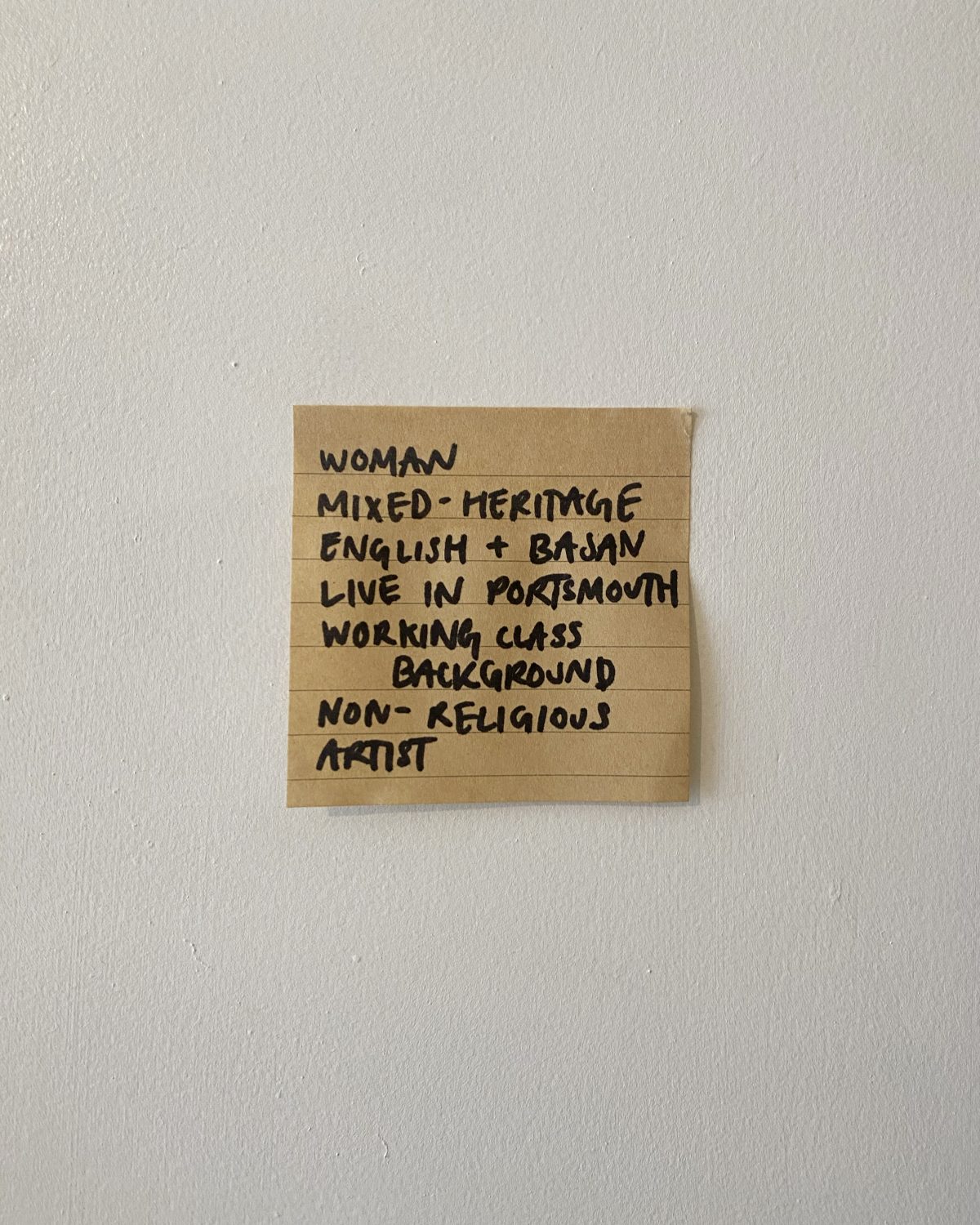
This task explores how diversity of opinions and perspectives will influence how we develop creative responses. This introduces students to the concept of ‘Lived Experience’ and how their own identities can shape their thinking processes.
Discuss
Invite students to write on post-it notes how they think their unique lived experience might affect or inform their perspective on the world, history, and what’s important to them.
Ask students: what is it that informs your perspective on the world? Students might reference their heritage, family, where they live, or specific life experiences.
This task helps both teachers and students acknowledge how we respond to history, acknowledging and exploring how this is informed by our own lived experiences.
II. Photography and Extraction
Photography, as a medium and device, has to look at its history. Considered as both art and documentation, the waters can become muddy with exploitation and fetishisation. Understanding the currency of the image, who gets to take what, and who gets to be seen, is integral to understanding the larger power dynamics at play – Isaac Huxtable
As we understand how lived experience informs how we perceive the world, we also need to acknowledge how, historically, photography has been influenced by the perspective of its maker/producer/inventor?
We’d like you to think about photography’s relationship to history because this is a relationship inherently linked to colonialism.
Research and discuss
Invite students to look at this project by Marie Smith titled Extraction: In Conversation with Anna Atkins, 2023 Whilst keeping the above quote by Isaac Huxtable in mind, ask students to respond to these questions:
- Why is Marie Smith focusing her research on Anna Atkins?
- Why does Smith use materials like tea and bleach to alter her images? What links could bleaching have to colonialism?
- What do you think is successful/illuminating about this project?
Notes: Inspired by artist Raven Chacon, replace wordings often associated with photography such as ‘shoot’ and ‘capture’ with ‘gathering’ or ‘recording’ to highlight photography’s extractive history.
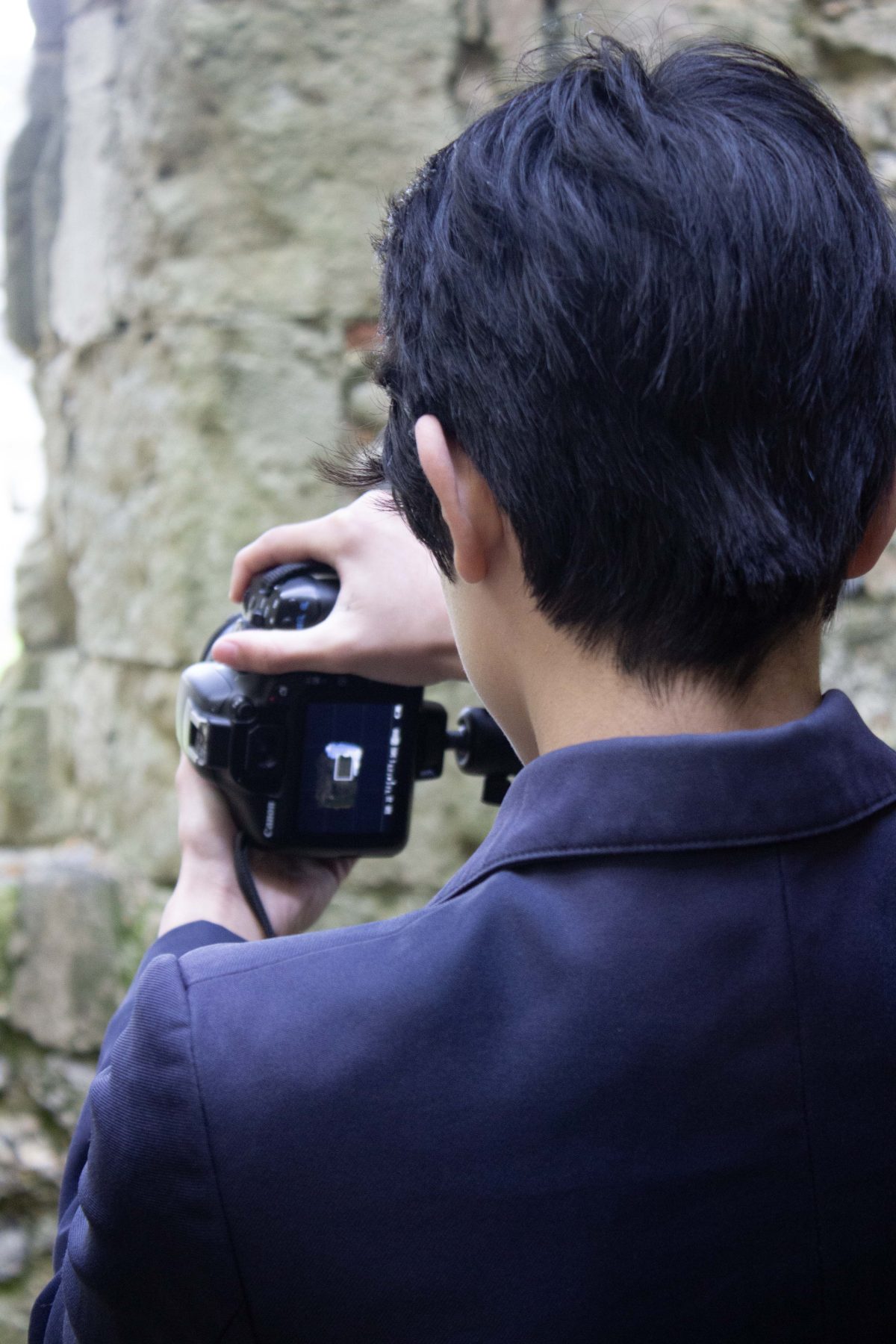
III. Exploring colonialism through the history of Portchester Castle
We invite you to discuss who history is for and how we can honour it by researching and developing understanding the history of the black prisoners of war held at Portchester Castle.
The archive* shifts based on who’s doing the prodding, who’s looking, who’s doing the listening – Jasleen Kaur
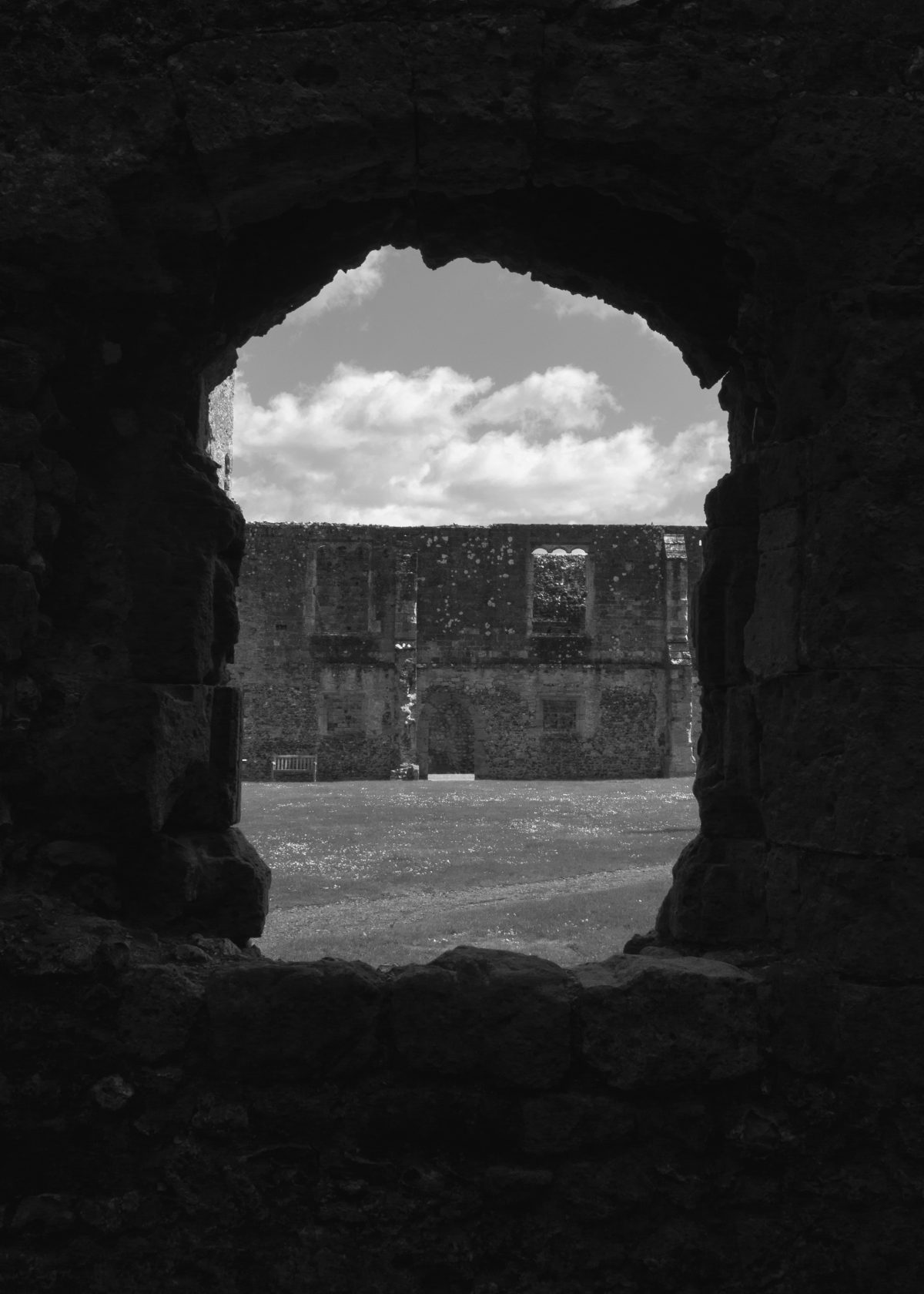
*In this context we could also replace ‘the archive’ with ‘history’.
Research Begin by encouraging students to research the history of Portchester Castle. How can we lead meaningful conversations about colonialism within the context of the prisoners of war at Portchester Castle?
Working with creative responses to history is complex, as we need to be aware of how we position ourselves in relation to history to not minimise or misrepresent. This needs to be done with sensitivity. As Jasleen Kaur suggests, historical archives and what we learn from them can change depending on our own lived experience.
The history of the prisoners of war at Portchester Castle has only been rediscovered in the last few years. This might relate to the quote above, as what we once understood as a linear history has become broadened to reveal the interconnected nature of Britain and empire.
Discuss
In groups or pairs, invite students to think about and discuss:
- Who history is made for, who is seen in it/who isn’t, and why?
- The timeline shows the journey of the Prisoners before they were sent to Portchester and afterwards, why is it important to consider the lives of these people before and after their time at Portchester?
- In what ways can we see the effects of colonial history in the present day?
IV. Exploring relationships between complex history and place
Many artists explore relationships between land and its complex histories. Artists utilise a variety of photographic techniques and processes to express how the land holds, hides and is marked by history.
Investigate
Begin by investigating the work of artist Dionne Lee, who works with a range of processes to hold and question or interrogate the history of slavery in North America and its ramifications.
Together with students, watch this video where Dionne Lee discusses her project Trap and Lean-To. Consider these questions:
- Lee uses photography to discuss who had access to landscapes and survival skills in the past. What photographic techniques show this most?
- Lee uses collage to disrupt the landscapes she photographs. What do you think she is trying to tell us about the history of slavery in relation to land?
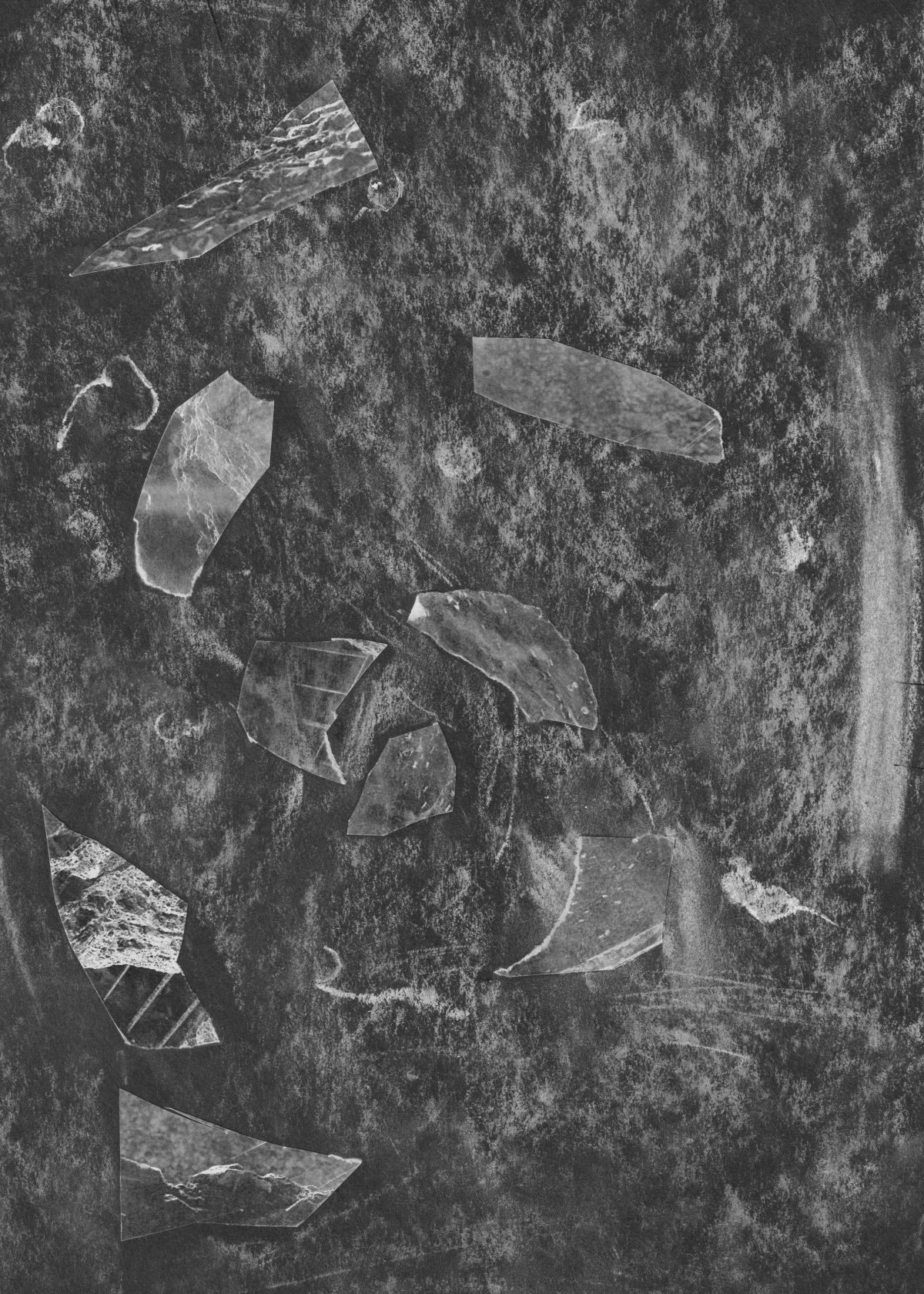
V. Develop an embodied encounter of a place through photography
Research
Begin by reading the following quote by Tina Campt where she champions a multi-sensory approach to looking and responding creatively to place.
Use this as a guiding line for your approach to the activities below. How can you work with the medium of photography to embody an experience of a place?
To be able to offer people an embodied encounter with images that is not privileging simply what we see… there’s so many different types of encounters… – Tina Campt
Notes: Inspired by artist Raven Chacon, replace wordings often associated with photography such as ‘shoot’ and ‘capture’ with ‘gathering’ or ‘recording’ to highlight photography’s extractive history.
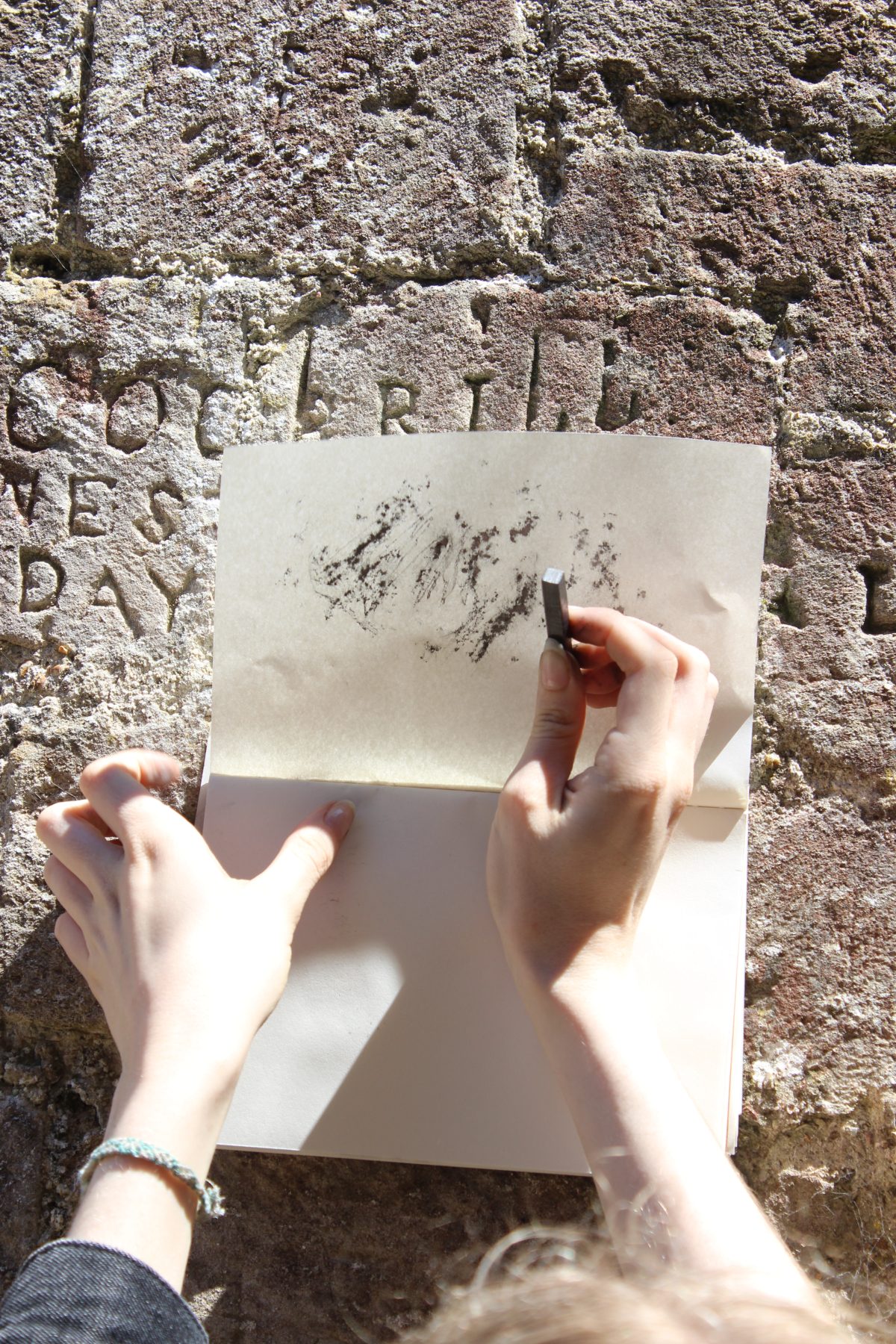
Activity A. Take students to visit a heritage site with complex histories* relevant to the themes of this resource and use the prompts below to record your journey through that place.
*We advise caution/sensitivity if you are dealing with a site that doesn’t have a similar context of colonial weight.
Invite students to view this site as a living/live place that bears witness to what came before. Ask them to:
- Note down what you can hear, smell, or taste.
- Make a rubbing of the site’s walls, rocks, trees or another surface using paper and graphite.
- Close your eyes and retrace your movement at the site using paper and pencil to create an experiential map.
- Gather natural materials from the site itself such as soil, stones, leaves, grass, seawater.
These activities serve to absorb and gather the histories that remain dormant within the site.
Activity B.
Source a map of the site you visited; this can be conventional in its approach to mapping space. You can use this as a guideline for geographical parameters.
Unravel how we map a place using the students’ responses to the activity above.
Use your experiential map as a base to begin collating and layering your other responses on top.
Consider these questions when making your map:
- What were you immediately drawn to?
- Did something unexpected emerge in your explorations?
- Summarise your encounter in three words.
- Think through how you could express the more subtle feelings of a space.
Notes: Make use of the map examples above. Note the use of text, shape, and collected objects to help guide you and your students through responses to the site. Be intuitive and feeling-led whilst making your own map responses. Think about the layers of history of the site and how they could be made visible in your map, this could be using text, rubbings, and objects.
The students’ informal and abstract takes on a map invite questioning of how Western maps contribute to historical bias/power/formality.
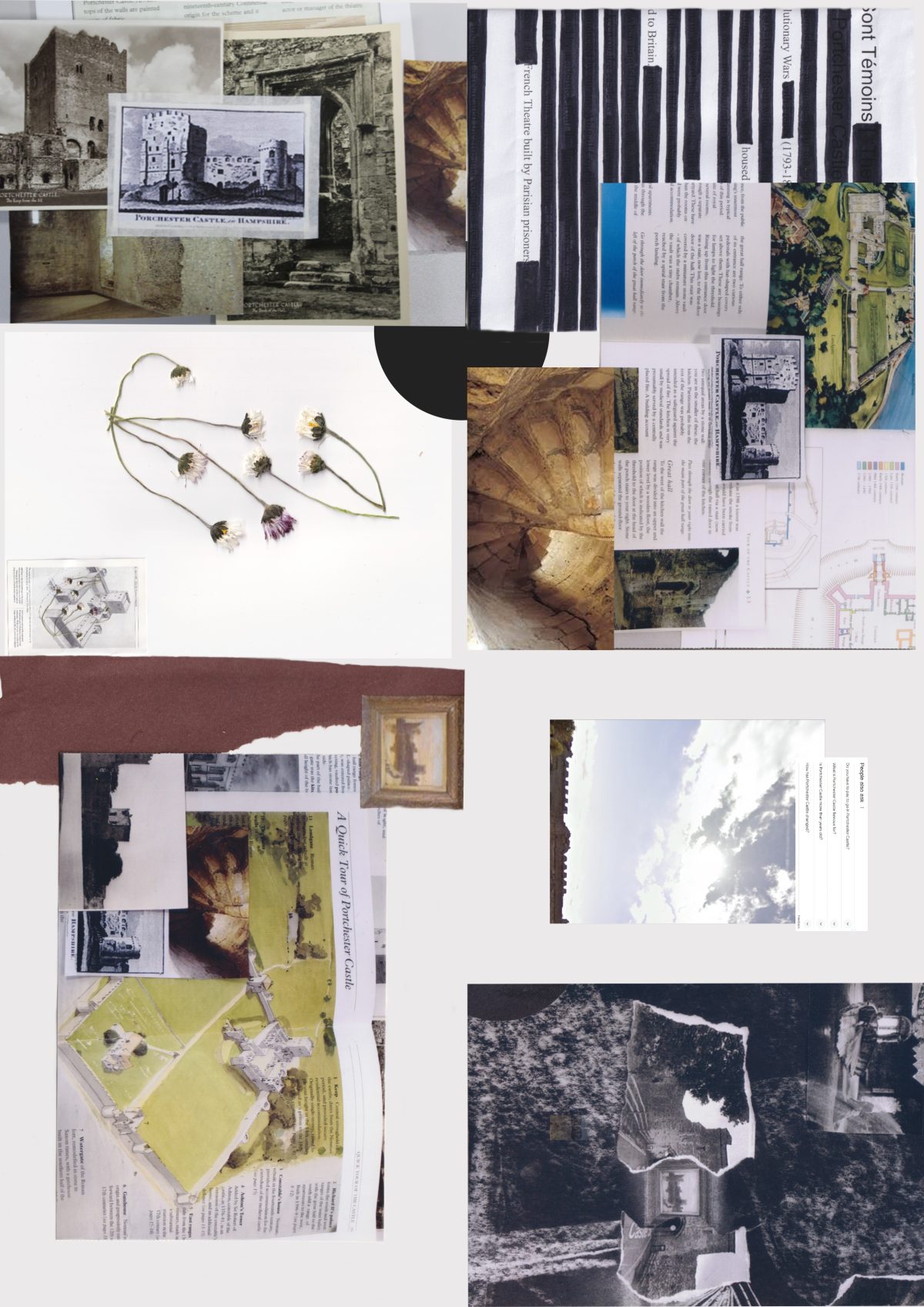
VI. Gathering from a distance: How to work with histories remotely
The way we get a sense of a place, and its history online can often be quite layered and can come from secondary sources.
Maya Brasington’s Magic Isle uses screenshots from YouTube videos alongside other found material to comment on and question how her country of heritage, Barbados, has been presented by the west, in turn influencing her own perceptions.
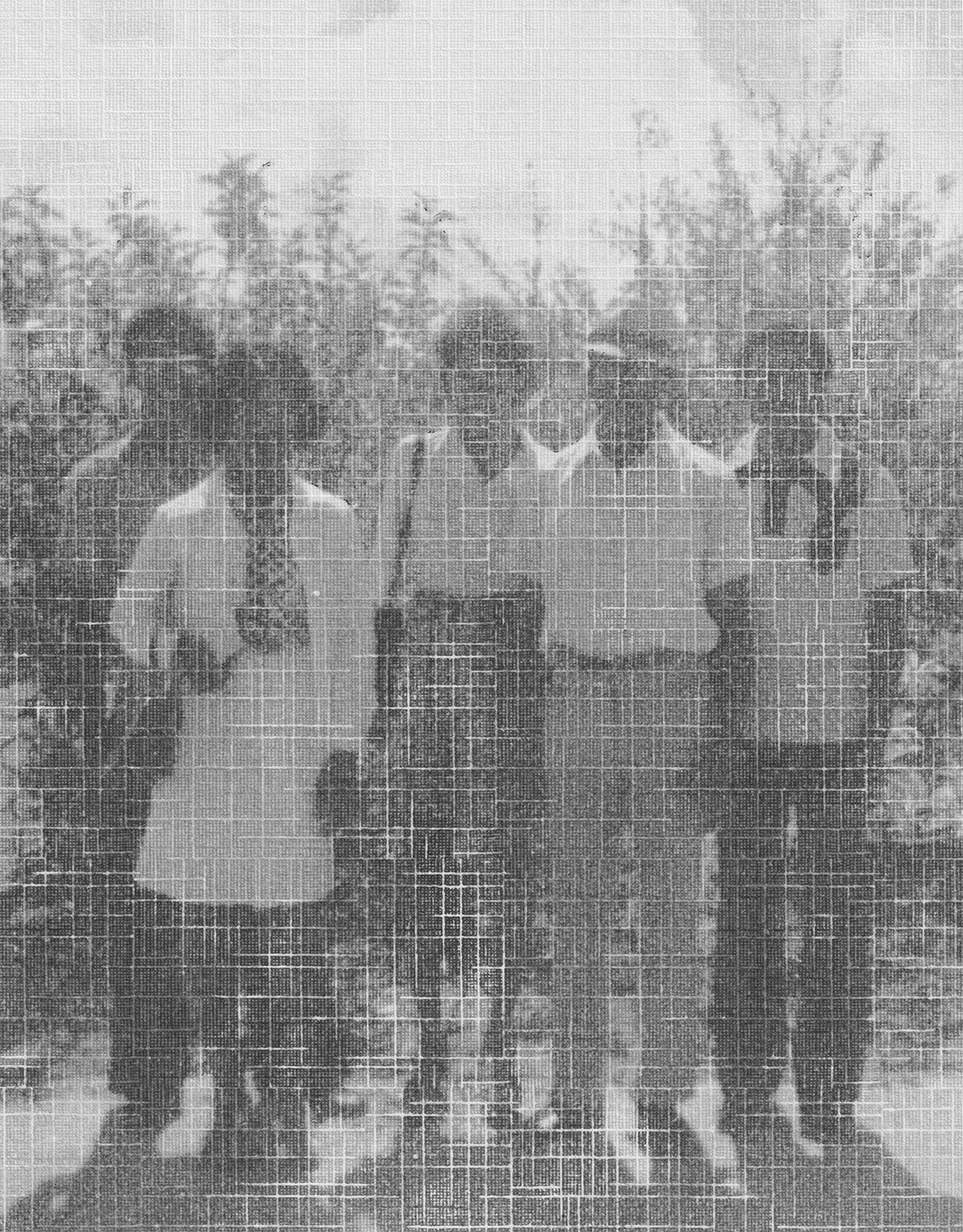
Research
If you don’t have access to Portchester Castle, use material you find online about the Castle or another relevant heritage site. Use English Heritage and other websites, Google, YouTube and more to build a narrative of what it’s like to experience a history from afar.
Screenshot images and texts or photograph your research material.
Activity
Bearing in mind these ideas around how histories are presented/misrepresented, condensed and disseminated, use your research material to make a map.
Experiment with layering the images together, use opacity tools to play with how images sit together, you can also scan in found objects or drawings to add to the online material.
Review
In pairs or groups review the work that students have made.
- What were you immediately drawn to?
- Summarise your online material gathering in 3 words, what words would you choose?
- Did something unexpected emerge in your explorations?
- What does it feel like to interpret a history online?
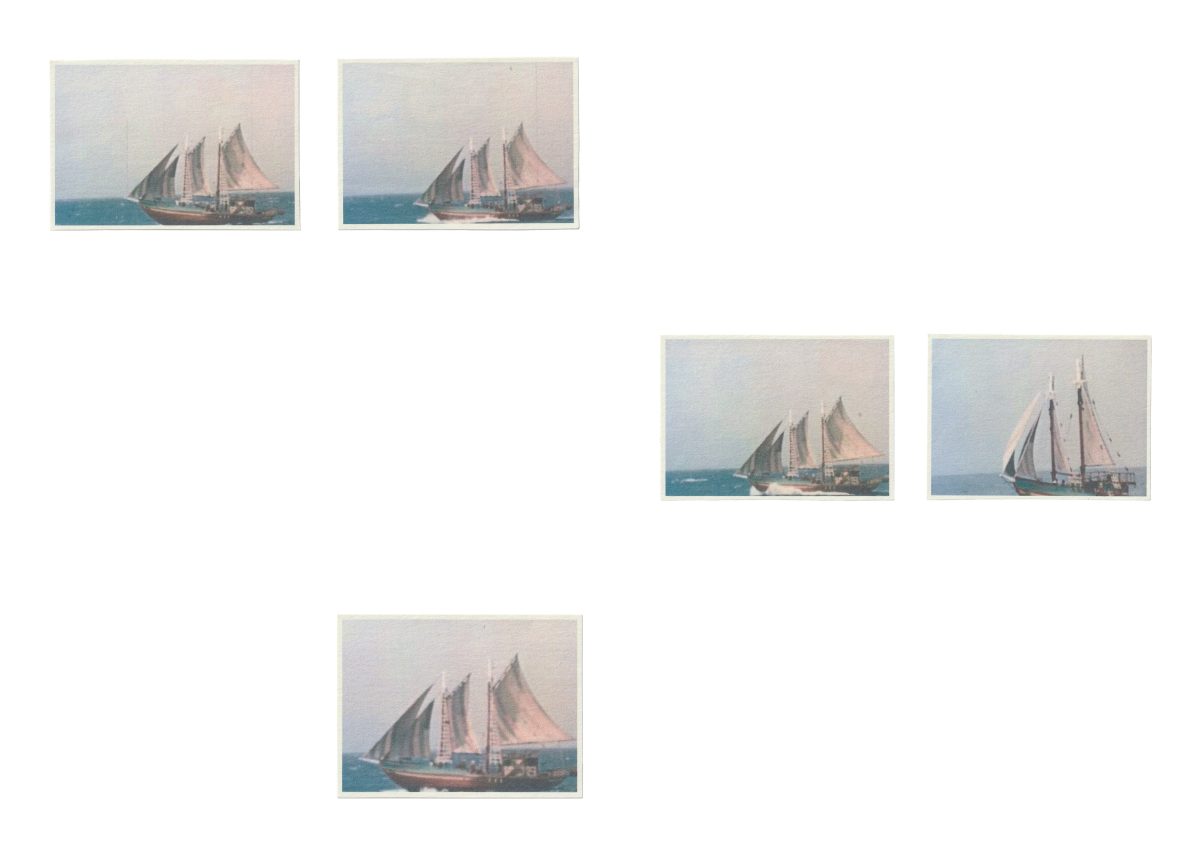
Other Artists
Hoda Afshar Speak the Wind
Adam Broomberg & Rafael Gonzalez Anchor in the Landscape
Amak Mahmoodian Zanjir
Amani Willet A Parallel Road
About the Contributors
Eva Jonas is a London-based visual artist and educator. Her practice invites viewers to reflect on our relationship with the natural world, recording where the body mediates how we experience, preserve, and perform within landscapes. Her projects lean on the processes of collecting and publishing.
Eva is currently facilitating A Gap in the Fence with Camden Art Centre and pupils at Maria Fidelis School to explore the participants’ inner and outer worlds through creative collaboration. Asking the group to work with, move through, and reflect on how we record and interpret route making. She is also co-facilitating the EPQ in Photography Course at The Photographers Gallery and on the Communities Programme at The Royal Academy.
Maya Brasington is a visual artist based in Portsmouth, UK. She uses photography as a tool to question and explore her mixed heritage, and the role photography plays in the formation of identity, memory, and imagination. Her practice centres interrogating notions of ‘third space’, diaspora, and the in-betweenness of identity. Her recent work reflects on her Bajan heritage and family history, acting to recentre and reconnect with narratives once lost or untold. Using a mixture of appropriated found images, photography, and poetry, Maya converges the past and present, echoing memories and stories passed down generations.
Freedom & Photography
This resource forms part of the Freedom & Photography Schools’ programme delivered by artists Maya Brasington and Eva Louisa Jonas.
Freedom & Photography is a partnership between Photoworks, English Heritage and the University of Warwick funded by the British Academy, the University of Warwick and English Heritage.

